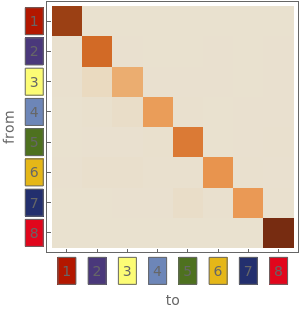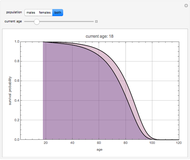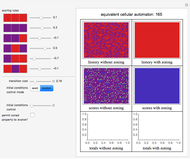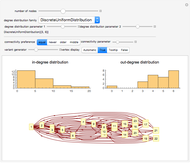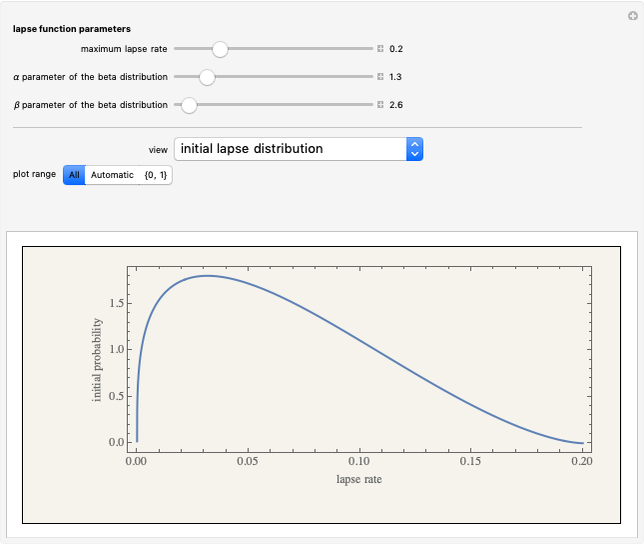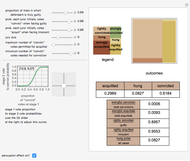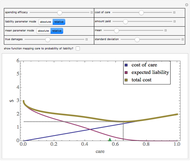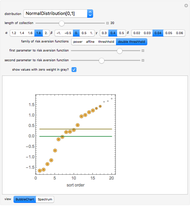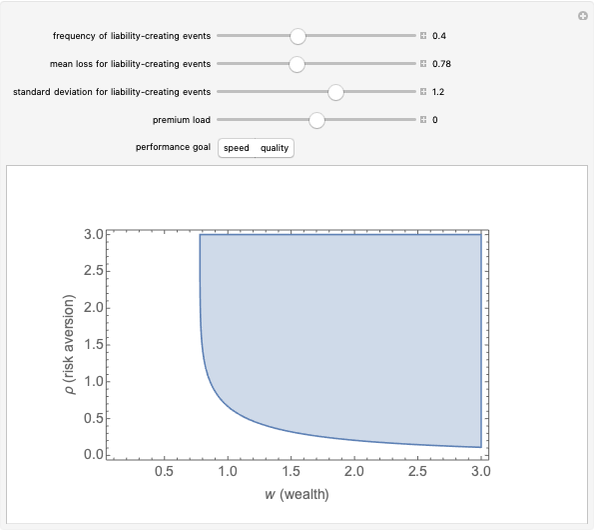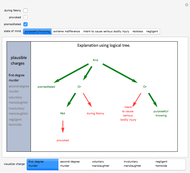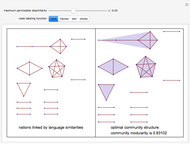Life Transitions

Requires a Wolfram Notebook System
Interact on desktop, mobile and cloud with the free Wolfram Player or other Wolfram Language products.
During the 1990s, Dr. James Robinson, an actuary, combined a careful examination of data and a continuous-time Markov model to develop a mathematical method for estimating the probability distribution of eight possible "health states" in which an individual of specified gender, initial age, and initial health state might be in after a specified period of time. Thus, the method could specify the probability that a healthy 51-year-old male might be in a health state characterized by severe cognitive impairment one month hence.
[more]
Contributed by: Seth J. Chandler (April 2011)
Open content licensed under CC BY-NC-SA
Snapshots
Details
In order to change the gender of the person, it is necessary to select "Markov" view.
For a copy of Dr. Robinson's work, see A Long-Term-Care Status Transition Model.
Dr. Robinson's methodology and its derivatives are used in the American insurance industry, particularly in long-term care insurance, to develop premiums, reserves, and do other essential computations.
The methodology employed by Dr. Robinson involved empirical work and statistics to determine the best function of initial age and gender that would compute transition rates among the eight states into which the data had divided health. Matrix exponentiation is then used to convert this transition rate matrix into a Markov matrix.
The health states differ according to three variables: (a) the number of "instrumental activities of daily living" that are impaired; (b) the number of "activities of daily living" that are impaired; and (c) whether a "cognitive impairment" exists. An activity of daily living, ubiquitously abbreviated as ADL, means an activity such as bathing, dressing, "transferring" (getting out of bed), toileting, continence, and eating. An instrumental activity of daily living, IADL, refers to something such as an inability to drive, prepare meals, or do housework. A cognitive impairment generally refers to a loss or deterioration in intellectual capacity such as that caused by Alzheimer's disease that requires substantial supervision to protect the person. In State 1, the person has no IADL, no ADLs, and no cognitive impairment. In State 2, the person has an IADL, no ADLS and no cognitive impairment. In State 3, the person has 1 ADL and no cognitive impairment. In State 4, the person has 2 ADLs and no cognitive impairments. In State 5, the person has 3 or more ADLs and no cognitive impairment. In State 6, the person has fewer than 2 ADLs but has cognitive impairment. In State 7, the person has 2 or more ADLS and has cognitive impairment. In State 8, the person is dead. Many long-term care insurance policies use definitions similar to these states to determine whether benefits are owing and whether premiums otherwise due are excused.
The contrast reduction control in the advanced controls permits you to alter the "contrast" of the array displaying the probability matrix. High values of the control greatly reduce contrast and may thus permit better visualization of small numbers.
Permanent Citation
"Life Transitions"
http://demonstrations.wolfram.com/LifeTransitions/
Wolfram Demonstrations Project
Published: April 29 2011
